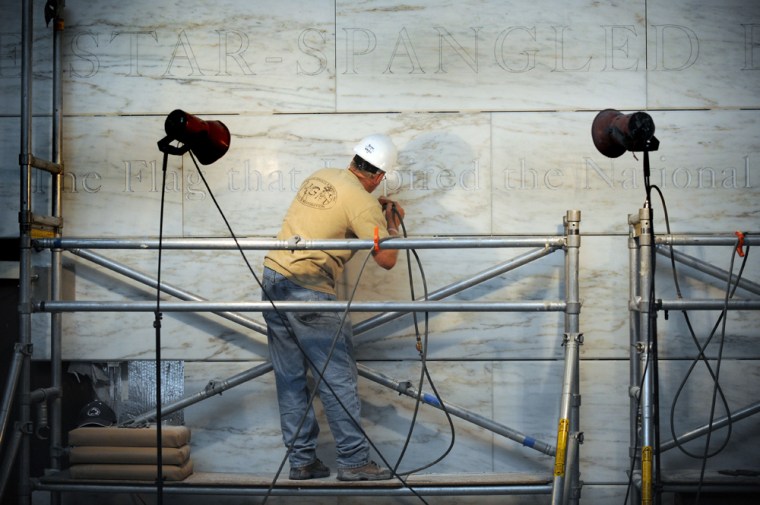A special new gallery for the flag that inspired the national anthem will debut in November when the Smithsonian’s National Museum of American History reopens after a longer-than-expected renovation, the museum announced Wednesday.
The Nov. 21 reopening of the home of Kermit the Frog and Dorothy’s ruby slippers coincides with the 145th anniversary of Abraham Lincoln’s Gettysburg Address, the famous Civil War speech delivered on Nov. 19, 1863. The museum will give visitors a rare chance to see the White House copy of Lincoln’s handwritten speech for several months. The document is usually kept in the Lincoln bedroom and must be back before the next president moves in.
“We want visitors to come away with a deeper understanding and appreciation of the American dream and what it has meant to be an American,” said museum director Brent Glass. A visit to the flag gallery, he said, “will be memorable and inspiring. It will be one of the must-see destinations in Washington, D.C.”
The museum had been slated to reopen this summer, but officials said unexpected asbestos and lead paint discovered during construction caused some delays in the $85 million project. The building, which usually draws millions of visitors each year, has been closed since September 2006. The asbestos cleanup cost an additional $2 million, Glass said.
The nation’s most popular history museum is in the midst of a major makeover. In addition to the new flag gallery, the museum’s central core will be opened up with a skylight to brighten spaces that had been dark and cavernous.
There’s also an effort to make the museum more “green” with cafes that forego disposable items in favor of real plates and silverware, along with locally grown foods, and carpet and chairs made from recycled materials.
The museum will be reorganized around a central atrium, which Glass calls the “public square.” It will become a place for naturalization ceremonies for new immigrants, musical performances and other events. Like other public squares around the world, the museum will become a place “to exchange information and ideas,” Glass said.
Beginning with the reopening, the museum plans to have historic characters walking around speaking with visitors every weekend and on holidays, as well as tours, theater and musical programs.
Touch ‘the bombs bursting in air’The iconic artifact will remain the 30-by-34-foot Star-Spangled Banner. Its new gallery is specially designed to allow visitors’ eyes to adjust from the bright sunlight of the atrium to a dimly lit space that will protect the flag and depict “the dawn’s early light.”

The distance between the light and dark spaces was carefully planned to allow visitors’ eyes to adapt as they approach the flag, said Gary Haney, design partner with the architectural firm Skidmore, Owings and Merrill, which designed the space. “It hopefully will be something that no one notices, but it’s a very delicate operation.”
Part of the exhibit will show how the flag has been preserved.
As visitors approach the flag, they’ll first learn about the War of 1812 and the burning of Washington. A piece of charred timber from the White House will “really anchor people in that moment,” said James Gardner, associate director of curatorial affairs. “We think that’s something that will make visitors go ’Wow!”’
The idea is to set the historical scene before visitors see the flag. “We are at war with the greatest empire on earth,” curator Jeffrey Brodie said. “The survival of the nation is at stake.”
After the British destroyed the White House, they moved north to the commercial hub of Baltimore, where Francis Scott Key penned the words that would become the national anthem. The flag gallery will include some of the sights and sounds of the kind of battle he witnessed.
“There will be a fragment of a bomb that visitors can touch — ’The bombs bursting in air ...,”’ Brodie said. “You’ll actually see where those words came from.”